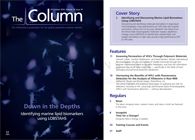Phenomenex to be Acquired by Danaher Corporation
Phenomenex has announced that it will be acquired by Danaher Corporation, a Fortune 150 science and technology company. Phenomenex will continue to operate as a standalone company, and will retain the Phenomenex brand, its personnel, and site locations.
Phenomenex (Torrance, California, USA) has announced that it will be acquired by Danaher Corporation (Washington, D.C., USA), a Fortune 150 science and technology company. Phenomenex will continue to operate as a standalone company, and will retain the Phenomenex brand, its personnel, and site locations.
“Phenomenex is a widely recognizable brand that we are proud to say is highly respected and well established as providing high-quality consumables to the scientific community worldwide,” said Fasha Mahjoor, CEO of Phenomenex. “Joining Danaher will allow us to maintain the high pace of innovation that our customers and international distributors have come to expect from us. This is our opportunity to further expand our R&D activities, benefit our customers with a more diversified product portfolio, and reinforce our market leadership.”
Phenomenex employees more than 700 people worldwide and provides support into 92 countries through direct and distributor channels.
“We are thrilled to have Phenomenex join Danaher’s life sciences portfolio of businesses, which include Sciex, Beckman Coulter Life Sciences, Pall, Leica Microsystems, and Molecular Devices,” said Dan Daniel, Executive Vice President of Danaher. “The Danaher Business System (DBS) has a strong track record of helping businesses rapidly scale operations and create long-term customer value. We look forward to supporting the Phenomenex team in leveraging DBS tools for growth and welcoming them to our Life Sciences team.”
The transaction is expected to close by late 2016. For more information, please visit www.phenomenex.com or www.danaher.com

Free Poster: NDSRI Risk Assessment and Trace-Level Analysis of N-Nitrosamines
April 25th 2025With increasing concern over genotoxic nitrosamine contaminants, regulatory bodies like the FDA and EMA have introduced strict guidelines following several high-profile drug recalls. This poster showcases a case study where LGC and Waters developed a UPLC/MS/MS method for quantifying trace levels of N-nitroso-sertraline in sertraline using Waters mass spectrometry and LGC reference standards.
New Guide: Characterising Impurity Standards – What Defines “Good Enough?”
April 25th 2025Impurity reference standards (IRSs) are essential for accurately identifying and quantifying impurities in pharmaceutical development and manufacturing. Yet, with limited regulatory guidance on how much characterisation is truly required for different applications, selecting the right standard can be challenging. To help, LGC has developed a new interactive multimedia guide, packed with expert insights to support your decision-making and give you greater confidence when choosing the right IRS for your specific needs.
Using the Carcinogenic Potency Categorisation Approach (CPCA) to Classify N-nitrosamine Impurities
April 25th 2025Learn how to manage nitrosamine impurities in pharmaceuticals with our free infographic. Discover how the CPCA approach establishes acceptable intake limits and guides the selection of NDSRI reference samples. Stay compliant and ensure safety with our ISO-accredited standards.

.png&w=3840&q=75)

.png&w=3840&q=75)



.png&w=3840&q=75)



.png&w=3840&q=75)









